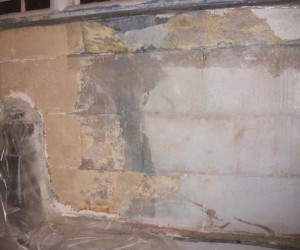The art of stone restoration is a skill that weaves together artistry with scientific understanding, breathing new life into surfaces that narrate history and human achievement. If you're looking to restore an antique stone fireplace, preserve a historic building, or merely rejuvenate your patio, understanding the right materials and methods is essential. This comprehensive guide will illuminate the various techniques involved in restoring stone, assisting both amateurs and professionals traverse the complexities of renewing stone surfaces while preserving their integrity.
As we explore into this topic, we will look at key materials that are optimal for different types of stone, uncovering the latest innovations in restoration techniques. Along the way, we will talk about common pitfalls to steer clear of and explore useful tips to keep your stone surfaces in the optimal condition. With the right approach, stone restoration turns into not just a task, but a rewarding experience that honors the past while enhancing the present. If you are contemplating a DIY project or thinking about hiring a professional, our insights will arm you with the knowledge needed to make informed decisions.
Typical Errors in Rock Restoration

An of the most mistakes made in stone refurbishment is not properly identifying the kind of rock being restored. Every stone kind—be it granite—has specific properties and requires focused care techniques. Employing the inappropriate cleaning products or restoration processes can result to irreversible harm, like etching or color change. Consequently, it is crucial to have an awareness of the rock's structure and features before initiating any restoration activity.
A further frequent error is neglecting to prepare the surface adequately before using any treatments. Failing to purify the stone thorough can lead to trapped filth and particles, which hinders the performance of protective agents or other protective layers. This mistake not only compromises the refurbishment procedure but may also cause future problems such as fungus or mould development. A proper washing and dry protocol should be created to guarantee the surface is prepared for the products to be applied.
In conclusion, many individuals underestimate the necessity of using suitable protective agents post-restoration. Once the rock has been restored to its native condition, putting on a quality sealer is vital to preserve the effort and avoid future deterioration. A lot of people mistakenly think that restoration only is enough, overlooking regular maintenance. It is important to recognize that suitable sealing and consistent care can dramatically extend the lifespan of the restored rock surfaces, maintaining them appearing lovely for years to follow.
Best Materials for Heritage Home Restoration
When rehabilitating historic homes, selecting the appropriate materials is essential to preserve genuineness and architectural integrity. One of the most preferred materials for stone restoration is calcium carbonate, known for its durability and natural beauty. It complements the look of many historic buildings, making it perfect for facades and structural elements. Additionally, lime mortar is favored over modern cement because it allows buildings to breathe and reduces the risk of moisture damage, which can be harmful to older structures.
Another crucial material is sandstone rock, often used in regions where it is available nearby. Its ease of use and diverse colors provide flexibility in design, allowing restorers to replicate the original stone used in building. Sandstone's natural weathering also allows for a seamless integration with the current structure, improving the home’s traditional aesthetic. Care should be taken to use compatible stone for restoration to maintain water drainage and heat regulation.
Lastly, clay tile is more often being utilized for restoring historic homes, especially in roofs and decorative elements. Known for its historical use in various architectural styles, terracotta offers both construction benefits and aesthetic appeal. Its thermal properties also provide efficiency in energy use advantages, serving as an efficient insulator. Using traditional materials like terracotta not only ensures genuineness but also honors traditional construction methods, making it a valuable addition to any rehabilitation project.
DIY vs. Professional Stone Restoration
When it comes to rock refurbishment, homeowners often face a choice between tackling the project themselves or engaging a specialist. Do-It-Yourself restoration can be attractive due to cost savings and the personal satisfaction of completing a task. Many people find achievement in small-scale fixes and upkeep, such as washing and resealing stone areas. With easily accessible products and internet guides, some tasks can be successfully handled without the help of an expert.
However, not all rock refurbishment jobs are suitable for DIY enthusiasts. marble crack repair sydney or those involving intricate refurbishment methods often require expertise and specialized tools. Professionals bring knowledge of the substances and the appropriate techniques to refurbish stone surfaces while maintaining their historical significance. They can assess the condition of the stone, identify potential risks, and execute remedies that ensure durable outcomes.
Ultimately, the decision between DIY and expert restoration depends on the task's size, complexity, and the homeowner's experience level. For small touch-ups, DIY may be sufficient, but for significant restoration projects, engaging a professional can provide peace of mind and optimal outcomes, ensuring the rock is not only restored but also preserved for future years.
